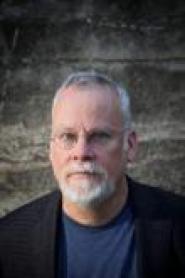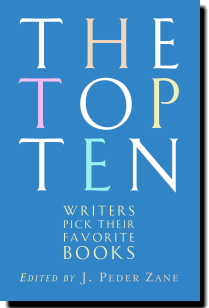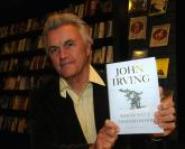This list reflects the rankings of all 174 lists published as of October 1, 2022. It is unchanged from the version in the published book.
 1. Alice’s Adventures in Wonderland by Lewis Carroll (1865). Young Alice follows a worried, hurrying White Rabbit into a topsy-turvy world, where comestibles make you grow and shrink, and flamingoes are used as croquet mallets. There she meets many now-beloved characters, such as the Mad Hatter, the Cheshire Cat, and the Queen of Hearts, in this linguistically playful tale that takes a child’s-eye view of the absurdities of adult manners.
1. Alice’s Adventures in Wonderland by Lewis Carroll (1865). Young Alice follows a worried, hurrying White Rabbit into a topsy-turvy world, where comestibles make you grow and shrink, and flamingoes are used as croquet mallets. There she meets many now-beloved characters, such as the Mad Hatter, the Cheshire Cat, and the Queen of Hearts, in this linguistically playful tale that takes a child’s-eye view of the absurdities of adult manners.
 2. The Stand by Stephen King (1978). This vivid apocalyptic tale with dozens of finely drawn characters begins with the military’s mistaken release of a deadly superflu that wipes out almost everyone on earth. The few survivors, spread out across the barren United States, are visited in their dreams by a kindly old woman in Nebraska and a sinister man in the West. They begin making their way toward these separate camps for what will prove to be a last stand between the forces of good and evil.
2. The Stand by Stephen King (1978). This vivid apocalyptic tale with dozens of finely drawn characters begins with the military’s mistaken release of a deadly superflu that wipes out almost everyone on earth. The few survivors, spread out across the barren United States, are visited in their dreams by a kindly old woman in Nebraska and a sinister man in the West. They begin making their way toward these separate camps for what will prove to be a last stand between the forces of good and evil.
 3. Gulliver’s Travels by Jonathan Swift (1726, 1735). Lemuel Gulliver, a ship’s doctor, embarks on four wondrous voyages from England to remote nations. Gulliver towers over six-inch Lilliputians and cowers under the giants in Brobdingnag. He witnesses a flying island and a country where horses are civilized and people are brutes. Fanciful and humorous, Swift’s fictional travelogue is a colorfully veiled but bitter indictment of eighteenth-century politics and culture.
3. Gulliver’s Travels by Jonathan Swift (1726, 1735). Lemuel Gulliver, a ship’s doctor, embarks on four wondrous voyages from England to remote nations. Gulliver towers over six-inch Lilliputians and cowers under the giants in Brobdingnag. He witnesses a flying island and a country where horses are civilized and people are brutes. Fanciful and humorous, Swift’s fictional travelogue is a colorfully veiled but bitter indictment of eighteenth-century politics and culture.
 4. The Strange Case of Dr. Jekyll and Mr. Hyde by Robert Louis Stevenson (1886). This novel might easily have become a victim of its own surpassing fame, which has removed all suspense from its central riddle: What is the relationship between Dr. Jekyll and Mr. Hyde? Yet as our narrator plumbs Dr. Jekyll’s descent into drug-addled, alter-ego madness, we are riveted by Stevenson’s portrait of the good and evil that lurks in one man’s heart. “This, too, was myself,” Jekyll says of Hyde. Somehow we suspect it’s us, too.
4. The Strange Case of Dr. Jekyll and Mr. Hyde by Robert Louis Stevenson (1886). This novel might easily have become a victim of its own surpassing fame, which has removed all suspense from its central riddle: What is the relationship between Dr. Jekyll and Mr. Hyde? Yet as our narrator plumbs Dr. Jekyll’s descent into drug-addled, alter-ego madness, we are riveted by Stevenson’s portrait of the good and evil that lurks in one man’s heart. “This, too, was myself,” Jekyll says of Hyde. Somehow we suspect it’s us, too.
 5. Voyage of the ‘Dawn Treader’ by C. S. Lewis (1952). In this, the third book of The Chronicles of Narnia, King Caspian sets sail to the end of the world to rescue the seven lost lords of Narnia. Along with three English children —who have come to Narnia this time by stepping into a painting —and other companions such as the brave, sword-wielding mouse Reepicheep, Caspian has numerous adventures that resonate with Christian and classical mythology.
5. Voyage of the ‘Dawn Treader’ by C. S. Lewis (1952). In this, the third book of The Chronicles of Narnia, King Caspian sets sail to the end of the world to rescue the seven lost lords of Narnia. Along with three English children —who have come to Narnia this time by stepping into a painting —and other companions such as the brave, sword-wielding mouse Reepicheep, Caspian has numerous adventures that resonate with Christian and classical mythology.
 6. Fiskadoro by Denis Johnson (1985). After a nuclear war devastates the planet, residents of what had been the Florida Keys try to rebuild their lives and communities in a landscape where shards from the obliterated past —religious stories, Jimi Hendrix records, parking decks —remain but are barely understood. By destroying and then rebuilding the world, including the invention of a strange dialect, Johnson’s daring novel probes the nature of communication, memory, and knowledge amid the palpable specter of death.
6. Fiskadoro by Denis Johnson (1985). After a nuclear war devastates the planet, residents of what had been the Florida Keys try to rebuild their lives and communities in a landscape where shards from the obliterated past —religious stories, Jimi Hendrix records, parking decks —remain but are barely understood. By destroying and then rebuilding the world, including the invention of a strange dialect, Johnson’s daring novel probes the nature of communication, memory, and knowledge amid the palpable specter of death.
 7. The Lord of the Rings by J. R. R. Tolkien (1954–56). An Oxford medievalist, Tolkien drew on his vast knowledge of mythology, theology, and linguistics to imagine this epic trilogy. The books chronicle the hobbit Frodo’s attempt to destroy the magical ring of Sauron, Lord of Darkness. “The Fellowship of the Ring” introduces the men, dwarves, and elves summoned by the wizard Gandalf to protect Frodo. In “The Two Towers,” Frodo and his companion Sam continue their quest toward Mount Doom, while the rest of the fellowship are brought into the battle detailed in “The Return of the King.”
7. The Lord of the Rings by J. R. R. Tolkien (1954–56). An Oxford medievalist, Tolkien drew on his vast knowledge of mythology, theology, and linguistics to imagine this epic trilogy. The books chronicle the hobbit Frodo’s attempt to destroy the magical ring of Sauron, Lord of Darkness. “The Fellowship of the Ring” introduces the men, dwarves, and elves summoned by the wizard Gandalf to protect Frodo. In “The Two Towers,” Frodo and his companion Sam continue their quest toward Mount Doom, while the rest of the fellowship are brought into the battle detailed in “The Return of the King.”
 8. The War with the Newts by Karel Capek (1936). This prescient and humorous Czech novel —part allegory, part satire, part science fiction romp —begins with the discovery of a new species of giant newt by a sea captain in an obscure tropical bay. Initially exploited for their pearl-harvesting abilities, the newts become the objects of scientific experimentation and then a massive global slave trade before they rise up and revolt, bringing humanity to its knees.
8. The War with the Newts by Karel Capek (1936). This prescient and humorous Czech novel —part allegory, part satire, part science fiction romp —begins with the discovery of a new species of giant newt by a sea captain in an obscure tropical bay. Initially exploited for their pearl-harvesting abilities, the newts become the objects of scientific experimentation and then a massive global slave trade before they rise up and revolt, bringing humanity to its knees.
 9. His Dark Materials by Philip Pullman (1995–2000). This epic trilogy, comprised of Northern Lights (a.k.a., The Golden Compass), The Subtle Knife, and The Amber Spyglass, reconceives Paradise Lost as an adventure/fantasy from an atheist, humanist perspective. Like Adam and Eve, Lyra and Will embrace knowledge. But for them it is the path to liberation, not damnation. In thrilling quests across magic universes filled with demons, angels, and talking animals, they battle “the Authority” that demands faith while repressing freedom.
9. His Dark Materials by Philip Pullman (1995–2000). This epic trilogy, comprised of Northern Lights (a.k.a., The Golden Compass), The Subtle Knife, and The Amber Spyglass, reconceives Paradise Lost as an adventure/fantasy from an atheist, humanist perspective. Like Adam and Eve, Lyra and Will embrace knowledge. But for them it is the path to liberation, not damnation. In thrilling quests across magic universes filled with demons, angels, and talking animals, they battle “the Authority” that demands faith while repressing freedom.
 10. Dune by Frank Herbert (1965). Winner of the Hugo and Nebula awards, and one of the best-selling works in science fiction history, Dune is a Shakespearean drama set on a withered planet. Conflict centers on Melange, a miraculous substance that extends life, grants psychic powers, and makes space travel possible. When the emperor transfers authority over this plant from the Harkonnen Noble House to the House Atreides, he sparks a chain of events that encompasses political intrigue, romance, war, and perhaps, the coming of the messiah.
10. Dune by Frank Herbert (1965). Winner of the Hugo and Nebula awards, and one of the best-selling works in science fiction history, Dune is a Shakespearean drama set on a withered planet. Conflict centers on Melange, a miraculous substance that extends life, grants psychic powers, and makes space travel possible. When the emperor transfers authority over this plant from the Harkonnen Noble House to the House Atreides, he sparks a chain of events that encompasses political intrigue, romance, war, and perhaps, the coming of the messiah.



